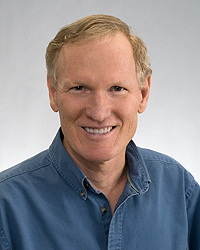.
Fourth Annual Robert E. Sheriff Lecture
Houston, November 18, 2002
Kwanza Arcana: A New Look at Angolan Salt Tectonics, Tectonostratigraphy, and Differential Uplift

Abstract:
We highlight results of a three-year research project on two basins: the Inner Kwanza Basin (IKB, onshore) and the Outer Kwanza Basin (OKB, offshore). The best-known region is the extensional province on the continental shelf, which has been intensively explored for its Albian reservoirs. To appreciate the entire Kwanza system, we focused instead on its lesser known, more arcane, regions. One such obscure region is obviously the deep-water and ultradeep-water frontiers of the OKB, now being explored. The other region is the IKB, which is mysterious not because it is new to exploration but because it is old; it has not been explored for several decades.
The Kwanza region had a far more complex history than might be expected on a passive margin. The following themes illustrate these complexities and surprises. (1) The IKB was an interior salt basin enclosed by basement highs, dominated by halokinesis, and having only minor translation, even though this region is often described as the type area for highly extensional raft tectonics; in contrast, the OKB was an open continental margin that deformed as a gravity-driven system dominated by large translation; each basin evolved separately and was more or less tectonically isolated. (2) A translation distance of ~25 km is robustly constrained by restoration of the extensional, translational, and contractional provinces of the OKB in a 360-km-long regional profile across both basins. (3) The IKB is segmented from north to south by diverse tectonic provinces, which run the gamut from salt withdrawal to basement-involved contraction in three fold belts. (4) Uplift of both basins varied greatly in space and time; Neogene coastal uplift in hinged segments destabilized the continental margin by triggering renewed gravity spreading; erosional unroofing rejuvenated the sediment supply. (5) Since the Eocene, five major hiatuses formed in the IKB; where the Tertiary cover is thickest, the basin remained close to sea level, which refutes the idea of a massively elevated coastal plateau. (6) The style, cause, and location of shortening varied greatly; in the Albian, a rind of overburden wrinkled to form small buckle folds over a wide area; from the Late Cretaceous to Miocene, virtually all shortening in the OKB was accommodated by advance of the Angola Salt Nappe across the distal limit of the salt basin; finally, Plio-Pleistocene burial of the nappe toe locked its advance and compressed the entire deep-water salt basin. (7) Apatite fission-track analysis suggests at least three thermal events, which we link to volcanism, erosional unroofing, and passage of hot fluids; the youngest thermal event coincided with Neogene